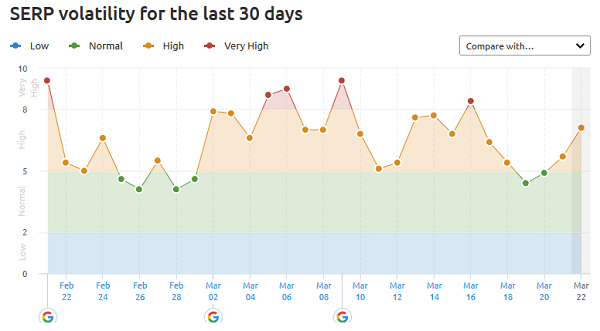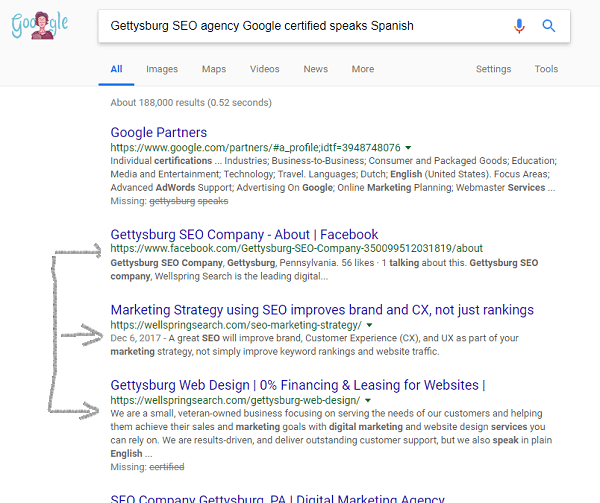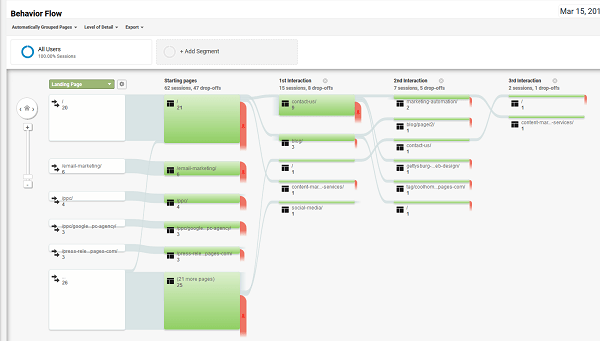SEO is moving a focus upon keywords to user intent with your website content
Google updates its algorithm every day, sometimes twice a day, but recently we had a major, broad core algorithm update that caused tremors for webmasters and SEOs. Instead of minor tweaks to how the search engine works, a Broad Core Algorithm Update happens only a few times each year, and their impact is more fundamental and far-ranging, rather than targeting a specific issue.

Why is this distinction between Broad Core Algorithm Updates and other Google updates important?
If we have an algorithm change which is specific, as SEO experts we can usually figure out what that change is or how your website is interacting with the algorithm causing the changes in rank: up or down. Effectively we can reverse engineer the change and either take corrective action to recover from a drop in rankings, or better, to capitalize on what you’ve been doing well and is now being given extra credit by Google.
A broad core algorithm change provides no such opportunities, because of their foundational nature:
- They are focused on generating better, more relevant search results for users
- There is nothing ‘wrong’ with your SEO or website, simply that Google is now looking at you differently
- There is no “fix” to recover from lost ranking positions, such as submitting a Disavow file to discount spammy links to your website
So, is there anything we can do to stay on the “good” side of such algorithm changes?
Transitioning from High Quality Content to Understanding your Customers
When I started in the SEO industry about 15 years ago, the mantra was, “Content is King” meaning you needed to focus on creating good quality content, and in turn this would engage readers and end up being shared, thus generating links which would further boost your rankings.
To a point, this was true – more so for the big brands and websites with big budgets, less so for everyone else, but that is a separate post. Google also was focused much more back then on identifying and demoting what it considered was “Low Quality” content, especially content that was spam or ad heavy, or was mainly for use in gaming the search algorithm. [You may already be familiar with the term Panda, a Google mechanism for identifying low-quality content.]
Google is far less focused on finding and demoting “low quality” content, not least because it is pretty good at finding this now. Today, Google is instead focused on working out user intent, or what is a search user actually trying to get an answer to?
For instance, if I type “Jaguar” into Google, am I looking for the football team, the aircraft, the big cat, a car or a car dealer?
What is my intention?

This relates to your website content in several ways:
User intent is determined by the goal the user is looking to achieve – to buy something, to find more information on something, or to find a specific resource or website.
If I type into Google, “How much will an SEO expert charge me?” then that is a transactional query. If we try, “How do I rank in local search results?” then this is probably an informational query. (There is a further type of query, navigational, where the user is trying to find a resource or website.)
Irrespective of the type of query, the question is not whether you have “High Quality” content, but whether your content will deliver the searcher’s goal by giving them the answer they seek.
So, if you are selling via your website, you’ll be looking to use transactional keywords, e.g. “Wellspring Search charges $x for Local SEO services.”
If your user’s goal is informational or navigational, then you’ll better serve user intent with keywords that reflect this. For instance, “Here is a list of top SEO companies” or “Guide to Implementing Local SEO”.
How Does This Tie Into Broad Core Algorithm Updates?
Remember we said that there are three things regarding a broad core algorithm update:
- Focus on relevancy for users
- You have done nothing “wrong”
- There is no recovery “fix”
So, how do you leverage broad core algorithm updates with your SEO?
Firstly, move from repetitively regurgitating content – no matter how good the quality, it must satisfy user intent. Be critical of what you are creating and publishing; ask yourself how a piece of content actually resonates with a user and solves their problem.
Our example “Guide to Implementing Local SEO” may be of the very highest quality, but it is of zero use to a website selling globally, nor to a local business looking to find out how much they will be charged to have someone do it for them.
Look behind user searches and keywords to get a handle on what your target users are trying to achieve, and then try to solve their problem for them.
Secondly, search engine rankings are a zero sum game in that for every winner there is a loser – there is only one #1 ranking position after all. Individual keywords can be very important, especially if they are a big money term, but there is a tectonic shift to broadening out the keyword portfolio you attract traffic with so that Google will serve up your website as a potentially relevant result.
“Gettysburg SEO agency Google certified speaks Spanish” is not a keyword term I would ever optimize for, but I certainly do want to show up in the search results if someone did search for it. So, locally we are optimized for Gettysburg PA where our head office is, we are Google certified, so we make sure that gets mentioned too. Finally, Laura Pajaro, our content manager is a Spanish speaker and we mention this because we offer multi-lingual and international SEO services too.
My point is that by ensuring the information is on our website, Google is smart enough to pick up that we are relevant for such an esoteric keyword, and we do get returned in the results though you will not find that actual phrase anywhere on our website (except now with this blog post!)

By making sure your website and content are pertinent to user goals, you are increasing the likelihood you will be ranked as a potentially relevant result for the searcher typing in such “long tail” keywords.
Thirdly, pay more attention to your customers and the user journey – how did they find you, how did they interact with you, what did they like and not like about you, what made you different/better than your competitors.
The user journey is not a straight line, from landing page to shopping cart – if you have Google Analytics, go and look at your Behavior Flow to see how complex the user path is. Bear in mind that this simply represents onsite behavior, not the back and forth between your website and other parts of your digital footprint, e.g. Facebook.

This understanding leads us to the impact of User Experience (UX) and how well your website treats visitors, for instance with fast loading pages, responsive web design suitable for smart phone users, and so much more (again a topic for another post).
Fourthly, develop your calls to action based upon user intent. User intent has a significant impact upon the entire sales cycle, from initial motivation to find something out, to buying a solution that fits their need, and everything in between. By now, you may see that we are firmly in the domain of marketing in its general sense, rather than being hamstrung by a digital perspective alone.
Finally, and this is a purely empirical opinion: I am much more interested in relevant traffic, i.e. users who are relevant to me! Attracting non-relevant users is inefficient and a waste of time and bandwidth. This is a lengthy subject of its own too, but be aware of just what increasing traffic numbers may actually mean: if we sell SEO and digital marketing services, someone visiting my website looking to learn Spanish is going to be disappointed and of no revenue value to our firm.
Conclusion
Google is changing its algorithm every day, but Broad Core Algorithm Changes are foundational and only happen a few times each year.
There is no fix or recovery action to be taken with such updates, instead websites and your SEO strategy must aim to get in front of algorithm developments.
The major algorithm development is the delivery of the goal behind user intent, and this starts with identifying just what user intent is and how to cater for it.
Keywords are still important but getting into the head of your customer is even more important for online success.
Ask these questions:
- Who is your ideal user?
- What do they want?
- What are they looking to ultimately achieve?
- What will make them convert best?
- What user action are they contemplating?
- What steps may the user be interested in performing next?
You are trying to be relevant to users as this is the prime determinant Google is working towards achieving, but remember, to be commercially successful, search users must also be relevant to your business too.
 Karl Hindle is managing partner of Wellspring Digital, manages the design portal CoolHomepages.com, and leads our SEO and PPC teams.
Karl Hindle is managing partner of Wellspring Digital, manages the design portal CoolHomepages.com, and leads our SEO and PPC teams.
LinkedIn profile
karl at wellspringdigital dot com